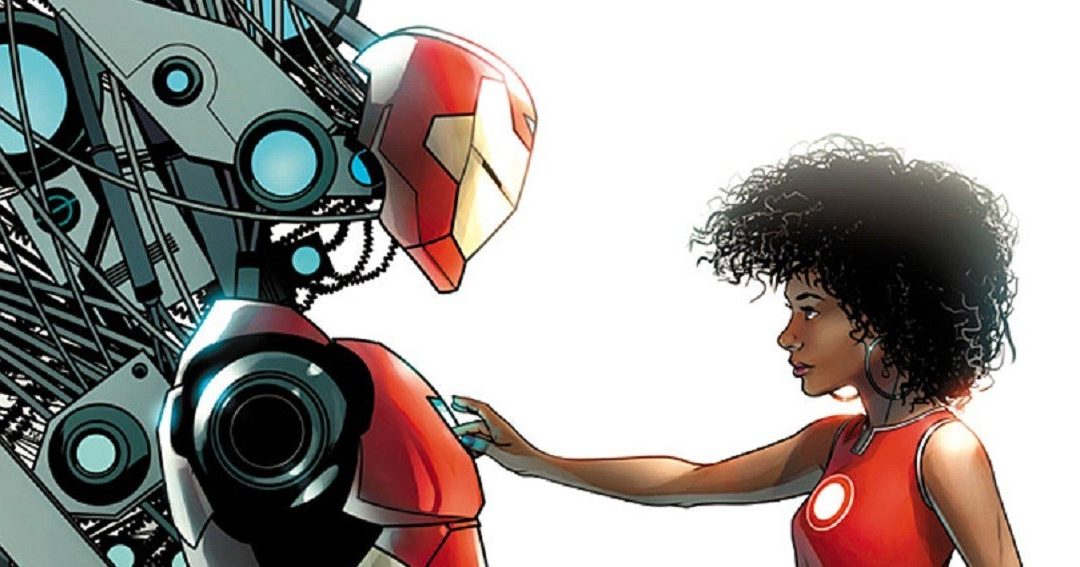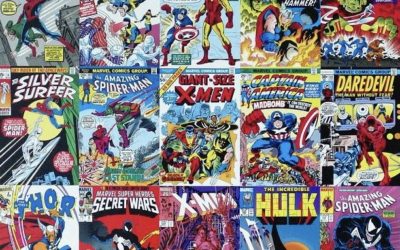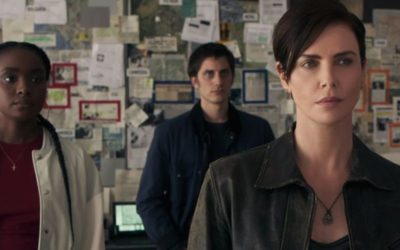If I were to ask you to name five scientists, engineers or doctors in pop culture, who would they be? Okay – ten. Or, similarly, the comic fan version – name the top five smartest characters (usually that’s an analogy for “scientist”) in either the Marvel or the DC Universe. Who were they?
Instead of running a poll, let’s do the next best thing – let’s tap into the collective consciousness of the internet for some ideas, and do some breakdowns based on race:
Note: Yeah, this is not a scientific poll by any means – and a few of these aren’t 100% current, but it’s a good start for our purposes here – what STEM-based characters are popular in pop culture?
Over at Rotten Tomatoes, we’ve got a gallery of 24 Favorite TV Doctors. The rundown: two Black characters: one animated (Dr. Hibbert from The Simpsons) and the other, 35-ish years old (Denzel Washington’s Dr. Philip Chandler from St. Elsewhere). That’s 8%.
At Den of Geek’s 20 Excellent Scientists in Mainstream Film and TV, while women are well-represented, there’s one Black scientist, Will Smith’s Dr. Robert Neville from I Am Legend. That’s 5%.
Interesting Engineering: 15 of the Top Movie and TV Scientists of All Time: Again, Will Smith’s Neville from I Am Legend, so 7%.
Wired’s The Best Fictional Scientists from TV and Movies: No Black representation, but hey, Dr. Bunsen Honeydew, the addled Muppet scientist is on there, so…yay?
io9’s Ten Fictional Scientists We Wish Were Real does a deep dive and lists Dr. Karen Jensen from Blade. Yeah – I forgot about her too – she was a doctor who was bitten by vampires and came up with the cure for vampirism in like, a day. Okay – 10%. The list also lists the puppet-character, Station from Bill and Ted’s Bogus Journey.
Heading into comics, ScreenRant’s 15 Smartest Superheroes in Comics History, you’ve got T’Challa and Mr. Terrific (Michael Holt) for a not too bad 13%.
As a personal aside, as the author of The Science of Rock and Morty, I’m going to go with the idea here that these lists are a little dated – newer ones were hard to come by – but seriously? No Rick Sanchez? What is up with that?
And a second personal aside – Google? What the hell?
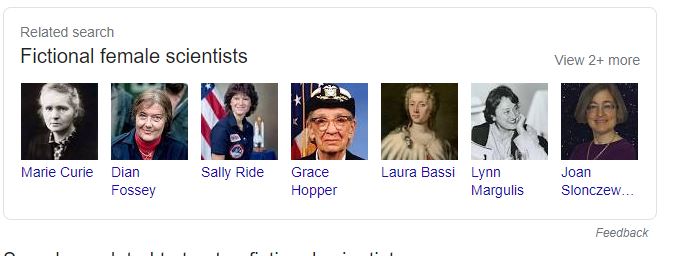
Seriously – this was a search result. Showed it to my wife. She was not pleased.
Digging Deeper – STEM Representation in Pop Culture
Okay, internet lists are internet lists, but what happens when you specifically go looking for Black representation in STEM roles in mainstream pop culture?
To possibly cut some criticism off at the knees, yes, good representation of scientists, doctors, mathematicians and engineers (not to mention what they do and how they do it) in pop culture has a long and troubled history, and are often flat-out ridiculous. I get it. That is an issue in and of itself though, as is female representation in science roles, and overall accurate minority representation in science-related roles, but I’m putting those on the table to focus on this one aspect.
Likewise, this isn’t necessarily a listing of Black representation in mainstream science fiction. That too is it’s own much larger issue that has been, and is handled by people far better suited to work through it than me (see Octavia Butler’s “The Lost Races of Science Fiction”). I was searching for characters that directly had STEM-related or STEM-adjacent roles – those who were given titles and/or demonstrated STEM-based abilities. I trimmed out pilots and characters just using advanced technology, for example. Yes, they use technology and science in their job, but they aren’t actively engaged in research, data collection and study. I did keep doctors though.
In preparation for this article, I asked friends and colleagues for suggestions of mainstream characters I’d forgotten…and while this is not comprehensive by any means, this is what we came up with. I kept just one version of the character in the list with where they made their biggest impact, rather than say, list T’Challa or Shuri in movies, TV and comics. That said, I completely understand that there will be disagreements. Onward.:
Movies:
- Dr. Miles Dyson (Joe Morton) – T2 (1991)
- Dr. Robert Neville (Will Smith) – I Am Legend (2007)
- Shuri (Letitia Wright) – Black Panther (2018)
- Lincoln Rhyme (Denzel Washington) – The Bone Collector (1999)
- Dr. Wallce Damon (Laurence Fishburne) – The Signal (2014)
- Dr. Karen Jensen (N’Bushe Wright) – Blade (1998)
- Lucius Fox (Morgan Freeman) – Nolanverse Batman trilogy (start, 2005)
- Dr. Franklin Storm (Reg E. Cathey) – Fantastic Four (2015)
- Dr. Adrian Helmsley (Chiwitel Ejiofor) – 2012 (2009)
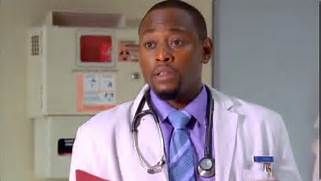
Dr. Eric Foreman, of House MD fame
Television:
- Star Trek just gets its own section here:
- Commander Nyota Uhura (Nichelle Nichols, Zoe Saldana) – TOS, “Kelvinverse” ST films (1966/2009)
- Dr. Richard Daystrom (William Marshall) – TOS (“The Ultimate Computer”)
- Dr. Jabilo M’Benga (Booker Bradshaw) – TOS (“A Private Little War,” “That Which Survives”)
- Lt. Boma (Don Marshall) – TOS (“The Galileo Seven”)
- Dr. Edward LaForge (Ben Vereen) – TNG (“Interface”)
- Commander Geordi LaForge (Levar Burton) – TNG
- Captain Benjamin Sisko (Avery Brooks) – DS9
- Dr. Lily Sloane (Alfre Woodward) – ST: TNG: First Contact
- Dr. Emory Erickson (Bill Cobbs) – ENT
- Commander Michael Burnham (Sonequa Martin-Green) – DIS
- Dr. Claire Finn (Penny Johnson Gerald) – The Orville
- Lt. John Lamarr (J. Lee) – The Orville
- Dr. Stephen Franklin (Richard Biggs) – Babylon 5
- Bernard Lowe (Jeffrey Wright) – Westworld (HBO)
- Dr. Curtis Holt/Mr. Terrific (Echo Kellum) – CW’s Arrowverse
- Dr. Lynne Stewart (Christine Adams) – Black Lightning
- Jason Wilkes (Reggie Austin) – Agent Carter
- Dr. Martha Jones (Freema Agyeman) – Doctor Who (2008)
- Alphonso “Mac” Mackenzie (Henry Simmons) – Marvel’s Agents of SHIELD
- Lt. Vanessa Damphousse (Lanei Chapman) – Space: Above and Beyond
- Dr. Philip Chandler (Denzel Washington) – St. Elsewhere
- Dr. Jackson Avery (Jesse Williams) – Grey’s Anatomy
- Dr. Christopher Turk (Donald Faison) – Scrubs
- Dr. Ben Turner (Blair Underwood) – City of Angels
- Dr. Sam Bennett (Taye Diggs) – Private Practice
- Astrid Farnsworth (Jasika Nicole) – Fringe
- Dr. Raymond Langston (Laurence Fishburne) – CSI
- Dr. Eric Foreman (Omar Epps) – House M.D.
- Naomi Nagata (Dominique Tipper) – The Expanse (2015 – TV, from first Expanse novel, Leviathan Wakes, 2011)
- Beth Chapel – Dr. Mid-Nite (Anjelika Washington) – Stargirl
Comics
- John Stewart (engineer, architect) – Green Lantern
- T’Challa (one of the top scientists/smartest people in the Marvel Universe) – Black Panther
- Dr. Willian “Bill” Foster (biochemistry) – Black Goliath/Giant-Man (played by Laurence Fishburne in Ant-Man and the Wasp…and is showing up a lot in this list…)
- Riri Williams (M.I.T. undergrad) – Ironheart
- Vic Stone – Cyborg
- Curtis Metcalf – Hardware
- Miles Morales – Spider-Man
- Lunella Layfaette (smartest person in the Marvel Universe) – Moon Girl (travels with Devil Dinosaur…)
- Dr. Adam Brashear (multiple PhDs) – Blue Marvel
- John Henry Irons (engineer/inventor) – Steel
- Natasha Irons (engineer/inventor) – Steel
As an afterthought on the list – again, it’s not comprehensive, but it’s pretty solid (please let me know of any egregious omissions on the article’s Facebook discussion thread, and we’ll add them in). Some observations stick out: many of these characters are second or third-tier characters, sidekicks or part of larger ensembles or teams; in comics, many are “replacements” for the white originators of the roles – and like many other Black characters introduced into comics, Bill Foster’s original name carried the horrible “Black” at the front; lead Black roles are most often backed by major star power such as Denzel Washington or Will Smith; oh, and Laurence Fishburne would eat up this whole category if we broadened it out a little more.
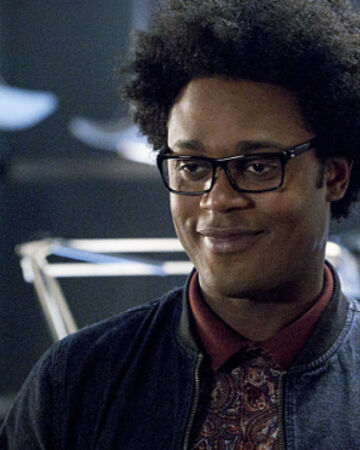
Curtis Holt, aka, Mr. Terrific from CW’s Arrow
Related to this – while I opted not to include video games or novels in my lists (novels too broad, and video games – I’ve got a lack of familiarity with the larger genre), Gita Jackson at Vice summed up the feelings of many fans when Sony announced that Miles Morales would get his own…game…for the upcoming PS5 launch. Jackson clarified the news, pointing out that Miles was not, in fact, getting his own game – the Miles portion of the game from Insomniac, is just a side story. Again – I’m not looking at games, but Jackson’s title of her piece, “Black People Are Always the Side Story”…I found that to be particularly relevant to the topic at hand.
And while this list looks long – it’s really not. And it covers about 50 years or so, given that Star Trek is there, and is arguably, one of the starts of our modern idea of “pop culture.” Again, yeah, problems with portrayals of scientists in pop culture…I know. But remember those lists at the top – those outlets had no problems filling up 10, 15, or 25 slots with doctors, engineers, or other science-related characters. Some even had animated characters and Muppets on them, presumably because they were easier to find compared to Black characters. Yeah, this list is really short, all things considered. Don’t think so? Check for yourself. Build your own list to the same depth of pop culture, but this time, just hunt for white STEM-based characters.
Something else I noticed was that properties/shows that you perhaps would have thought would be in here – more…forward-thinking series or more modern remakes of classics didn’t have any characters that could be listed. Shows such as The Big Bang Theory, and franchises like Battlestar Galactica, the three new J.J. Abrams’ Star Trek movies, and virtually every Star Wars offering had no Black characters in STEM-type roles. That was…I want to say weird, but I feel it’s more like just how things are, normally.
So why is it important at all?
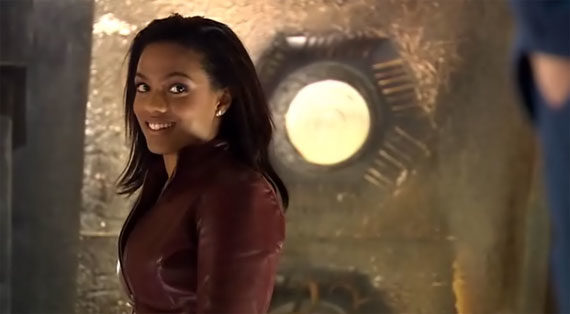
Dr. Martha Jones – yeah, remember? The Tenth Doctor met her while she was on call in her hospital.
Where We Are in STEM
Wednesday, June 10th was designated as #ShutDownSTEM/#ShutDownAcademia by a number of groups. The day was meant to be taken as one to pause and look at your institution’s race polices, student makeup in academia/STEM, listen and learn about system racism in STEM fields, start plans to root out systemic racism in institutions of higher learning and science, start developing plans to approach inequality in STEM education at local levels, and overall, improve the STEM experience for non-white individuals.
Twitter, Instagram, and Facebook lit up on respective threads discussing the topic – with inspiring stories, upsetting stories, as well as many non-Black scientists and researchers seeking to understand their colleagues’ experience. The topic also spawned social media threads with comments about how it wasn’t needed, how there is no racism – institutional, or otherwise – in science, and since science is a meritocracy, the makeup of scientists is simply a reflection of the individuals who are smart enough and have enough determination to make it.
The thing is, the data just doesn’t support any of those views about Black individuals in STEM fields and careers.
A 2018 study published by the Pew Research Center showed that Blacks are underrepresented throughout most STEM-related fields. Black people represent roughly 13% of the total United States population, but only:
- 5% of engineering jobs
- 6% of physical science jobs
- 9% of math jobs
- 4% of life sciences
- 7% of computer jobs
- 11% of health-related jobs.
All told, only 9% of individuals with STEM jobs are Black, and of those, more are foreign-born (22%) than Black workers overall in the US (14%). More recently, in a piece explaining why America needs more Black doctors, US News reminded readers of a sobering statistic – only 6% of doctors are Black. Yes, despite Blair, Omar, Taye, Donald and Denzel.
And for the small percentages that do land jobs in their STEM fields…many report that – despite claims from the #ShutDownSTEM critics – conditions aren’t ideal. Writing for STAT earlier this week, Dr. Uche Blackstock, a faculty member at an academic medical center where young doctors are trained, explained that her decision to leave her school was based on her treatment.
“Black faculty members have cited lack of mentorship and sponsorship, barriers to promotion and advancement, and lack of supportive — and sometimes hostile — work environments as factors in their attrition from academic medical centers. In addition to the typical obligations of academic faculty, they are often expected or told to execute “diversity” efforts such as chairing diversity committees, mentoring minority trainees, and the like, and then are rarely recognized or compensated for this invaluable work.
“I find it ironic that Black faculty members are unfairly tasked with the complex and overwhelming chore of remedying the structural outcomes of centuries of institutionalized racism that we did not create in the first place.
“Last month, I made the difficult decision to leave my faculty position at an academic medical center after more than nine years there because of a toxic and oppressive work environment that instilled in me fear of retaliation for being vocal about racism and sexism within the institution.”
Blackstock’s story another Pew Research Center report cited – that 62% of Blacks in STEM jobs reported having experienced discrimination based on their race at work, compared to 14% of whites in STEM jobs.
And as Blackstock wrote, sometimes you just have to leave. And as any number of #ShutdownSTEM discussion showed, her experience is far from unique.
Let’s follow this down. Blacks are underrepresented in STEM fields and careers. But there are more students coming to take those places, right?
Well…
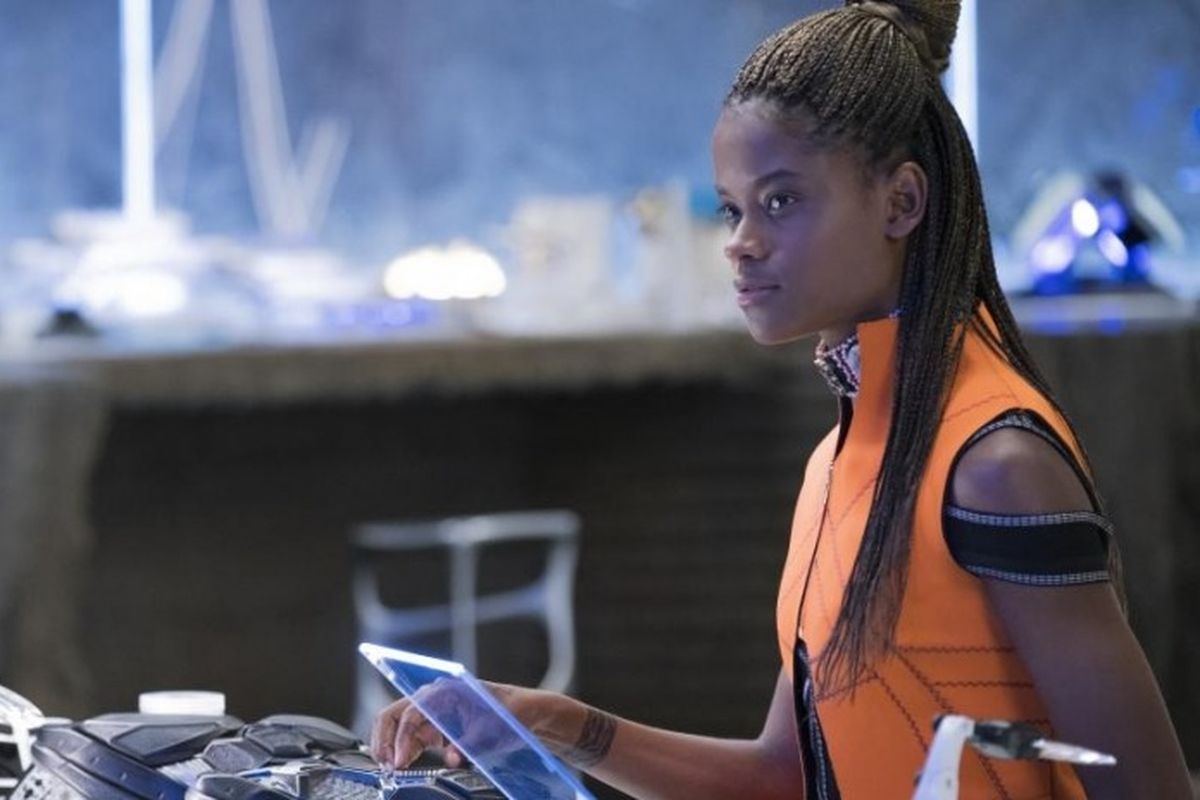
Shuri captivated – and motivated – thousands of future scientists in Black Panther
Training Grounds For Future Black Scientists & Doctors
White, Latinx and Black students declare STEM majors in roughly equal amounts when they get to college (19% vs. 20% vs. 18%), but, according to a study in Educational Researcher published in 2019, 40% of Black students leave their particular program of study before earning their degree. And the major-change is in a way, self-perpetuating, as University of Memphis economists, Carmen Astorne-Figari and Jamin Speer explained in a 2017 paper. According to their findings, social factors were a large reason fueling a student’s decision to change majors. As they explained, students will tend to go into major programs of study where the majority of students look like them. And making things worse, a 2019 study published in The Journal of Blacks in Higher Education found that Black STEM majors who looked “stereotypically Black” were less likely than their peers to complete their degrees.
Earlier this year, Clemson University’s Charles H. Houston Center for the Study of Black Experience in Education released an infographic (below) summarizing its findings on the enrollment and graduation experiences of Black and Hispanic males in STEM fields, based on data from the National Center for Education Statistics.
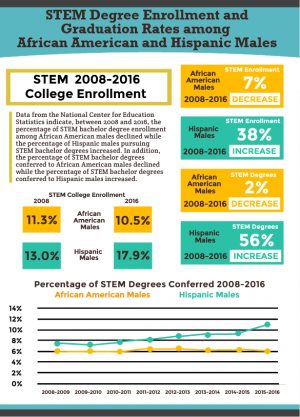
The findings showed that for the period, 2008-2016, STEM enrollment for Black males decreased by 7% and graduation rates in STEM fields decreased by 2%. This is compared to Hispanic males who saw a 38% increase in enrollment and a 56% increase in graduation in similar programs and fields.
Another important factor in both undergraduate and graduate STEM programs that directly relates to the success of Black STEM students is the question of who they have as instructors, advisors, and mentors. Looking at data from 2017, a 2019 Pew study showed that 6% of postsecondary faculty were Black, compared to an overall 14% of students. Looking at STEM in particular, a study published in 2017 showed that while STEM faculty diversity has been increasing over time, Black faculty are still underrepresented. In the examination of six top, “selective public” universities, the researchers found 0.7% of biology and 1.4% of chemistry faculty were Black. Results at private universities and HBCUs would be different from this study’s “snapshot” – and progress is being made, albeit slowly, at many large universities. But the lack of representation in STEM faculty holds open the possibility that Black STEM students may never be taught by, or even see a faculty member that looks like them, on a career path they at one time may have seen themselves pursuing.
Black students move out of STEM majors, fewer students complete degrees, and then go on to get STEM-related jobs, which makes fewer Black scientists, doctors, and engineers, and that makes fewer examples for Black students interested in STEM careers and on and on and on.
What about high school and the grades below it?
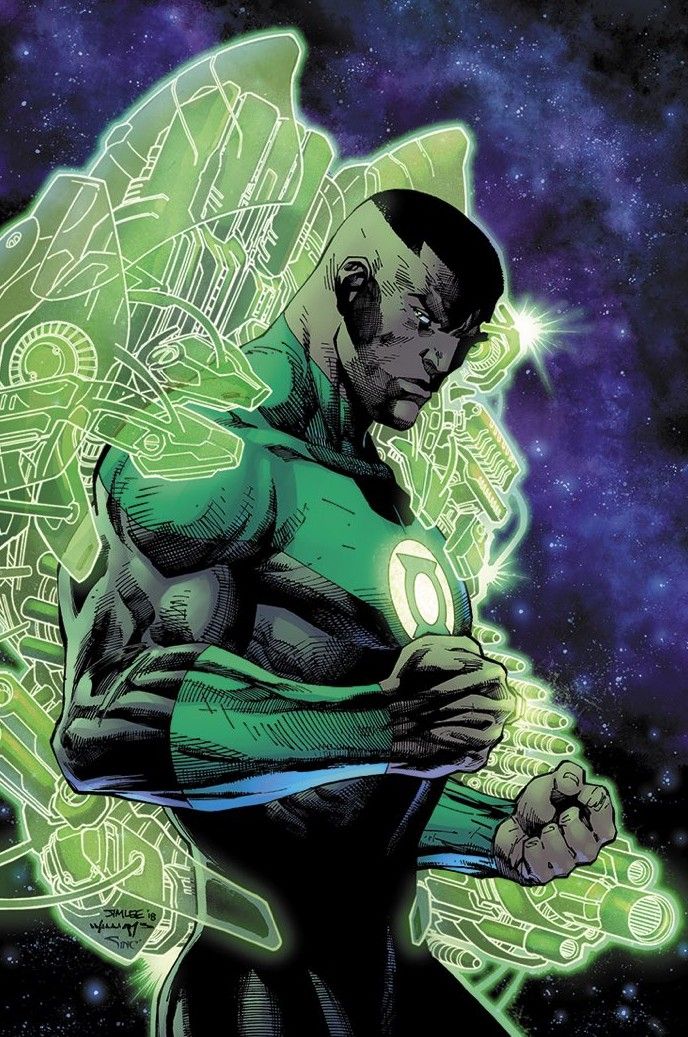
Though his architecture background has been diminished, and his retconned military service emphasized, John Stewart has STEM roots
Lighting – or Extinguishing – the STEM Spark
There have been books – check that – libraries are written about the history and state of education for Black students in America, both before and after Brown v. Board of Education. Many of them deal with STEM, specifically – but you probably know many broad conclusions.
- School choice allows de facto school segregation to continue – legally.
- School district funding is wildly unequal between districts and between schools, resulting in “have” and “have-not” schools, which influence STEM resources directly.
- Faculty at Title I schools (which serve minority and low-income populations) is, overall, less experienced, less well-trained and more transient than faculty at non-Title I, or more affluent schools.
- Discipline in schools is often race-related.
- Housing disparities and systemic racism in housing (such as redlining) have allowed for separate and unequal educational opportunities to continue.
- A lack of pre-K programs and opportunities are common in the communities.
- The “achievement gap” between black and white students is persistent and tenacious, to the point of becoming an unchangeable part of the larger educational system.
- Poor educational quality and outcomes in grade school follow students through middle and high school, limiting the courses available to them.
To get more STEM specific, 2013 Department of Education data showed that on the whole, Black students in the United States were much less likely as white students to earn AP or IB credit for courses in math (17% vs. 6%) and in science (16% vs. 8%). 2015-16 data from the Department of Education’s Office of Civil Rights showed that Black and Latinx students were less likely to attend schools where advanced math and science classes are taught, and when they are in class, do not perform as well as their peers.
Enrichment programs for these groups – some decades old and nationwide – have shown progress, but clearly, more can be done, and more needs to be done.
As can be commonly heard around the halls of public education – every step, every piece of this machine is broken. It’s the whole system – fewer Black students have access to quality math and science education, fewer then see STEM as a viable career pathway, Black STEM students in university programs drop out more than their peers, resulting in fewer STEM graduates, fewer graduate students, and fewer pursuing a STEM-related field.
Fewer, fewer, fewer.
“You cannot be what you don’t see,” gets tossed around a lot.
Representation is important.
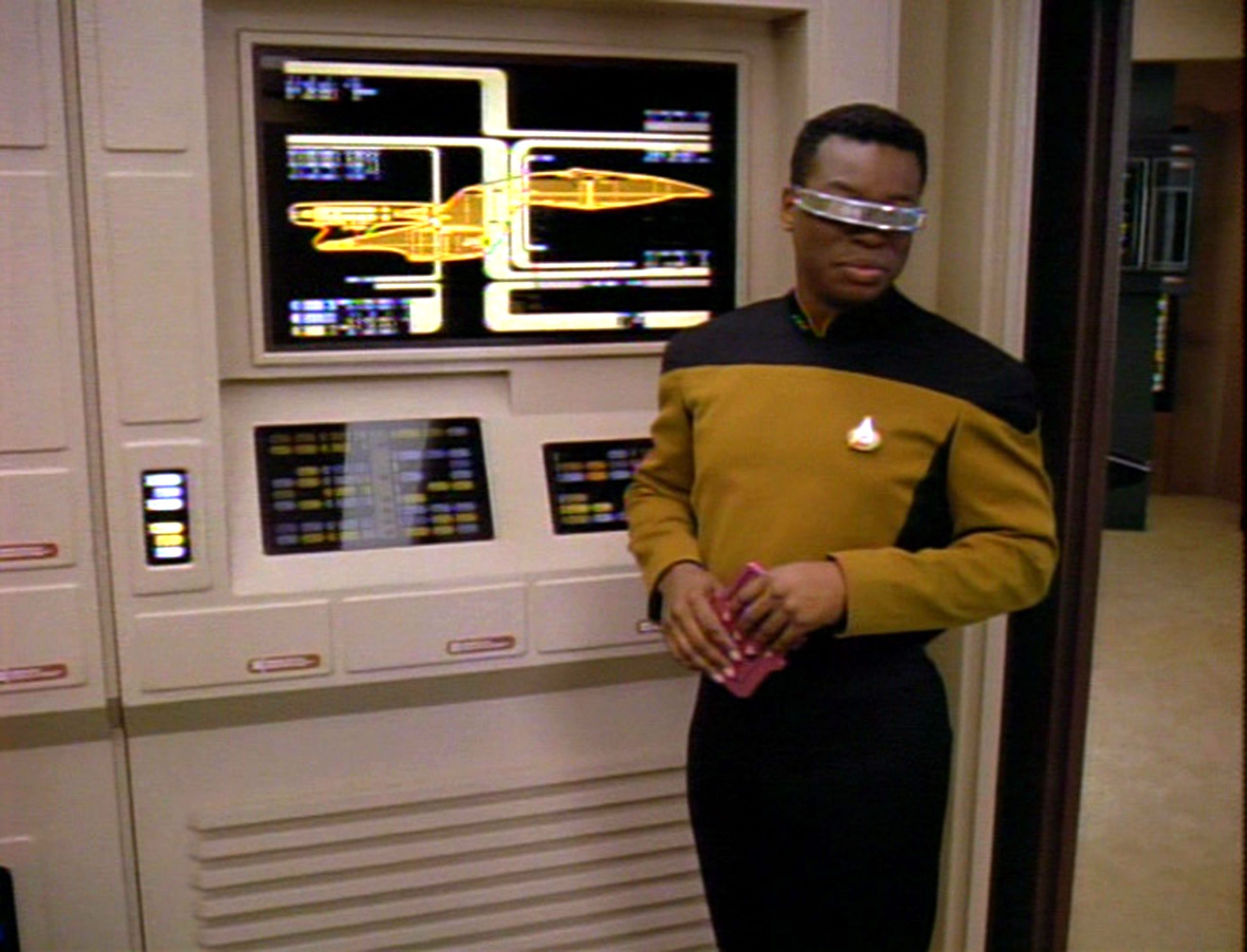
Geordi saved the day…how many times? Yeah – a lot.
What Can Pop Culture Do?
This is a multifaceted problem, for sure, and an “all of us” problem. Lack of Black representation in STEM isn’t something that’s going to go away if we in education, research, industry, and academics put our heads in the sand – whether quietly, or loudly by denying that such issues exist. Lack of diversity in a field has a corrosive, self-serving effect. As Kuheli Dutt explained in a recent comment in Nature Geosciences, “The less diverse field, the less welcoming it is to minorities, and the more prevalent implicit biases become.”
Dutt was speaking specifically about geosciences, but her point can apply to virtually every STEM field. The less diverse a field is, the more monolithic the group thought becomes, the more similar the approaches to problems become, the narrower the scope becomes, the narrower the culture surrounding the field becomes. Increased diversity and inclusion goes against all of those, and leads to better science.
Look, there are a lot – a lot – of factors that do and have contributed to the situation described above. I’m not about to prescribe Black STEM representation in pop culture as a cure-all.
That said – think about a couple of ideas that are more truth than not: fiction is the first draft of reality. And science fiction is, or can be, the first draft of our future.
Let’s all be clear what the message is when pop culture/science fiction is produced without the inclusion of Black (or other minority) characters. Movies, television, comics, video games – these are all the stories we tell one another – something we have been doing since we started making campfires at night. Pop culture stories are modern versions of stories about our world, how we’d like our world to be, and about worlds we’d like to see tomorrow. For decades of the past, and still continuing today, we’ve been telling these stories without some people.
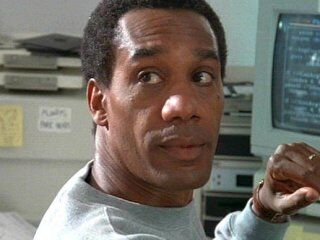
Miles Dyson created Skynet and then destroyed it to save the future in T2
Speaking specifically about afrofuturism and science fiction’s history of excluding Black people, educator Steven Barnes said, “You could have a movie where worlds collide and they build spaceships to save the world…and all the people on the spaceships are white. The filmmakers didn’t even question this, we literally don’t exist in their fantasies. Now the situation is a lot better in a lot of ways.”
Barnes’ last point is true – things are a lot better in science fiction and pop culture as a whole, but that doesn’t take away from where we need to go and what we need to do: further and more.
As USC-Dornsville Physics Professor (and Marvel science advisor) Clifford Johnson explains in his terrific article “The Hidden Superpower of Black Panther: Scientist Role Models,” fixing systemic and institutional problems with race and equality and improving STEM education are part of the solution, but are less effective than they could be without some form of inspiration to nurture and grow an interest in science in the first place. Pop culture – especially science fiction – has a unique power inherent with many of its fans – they can visualize both the world and their place in helping that world come to be, which leads them down the STEM path. To make a science fiction world real, you need science, and traveling on that journey is smoother when you have a guide, an inspiration.
Don’t believe me? Some of you are reading this on a communicator/PADD/tricorder hybrid, right? I’m not saying it’s a direct path, but someone in the development of the cell phone watched some Star Trek somewhere along the line. Or, for a more realistic take, just look at Mae Jemison – the first Black woman in space, and she has always pointed back to Star Trek’s Uhura as inspiration and proof that her place as a Black woman was in the stars. Fun fact, Jemison’s Star Trek connection got even closer when she played Lt. Palmer in The Next Generation episode, “Second Chances.”
For those of us in STEM, no matter what our role – inventing, researching, or teaching and encouraging others to follow the path, we need more examples in our stories, in our collective futures. But the thing is – I need to replace the Riri Williams poster in my pop culture-friendly classroom with someone new. I need to point to where my high school students can find Shuri’s new, ass-kicking science adventures – that was 2015 after all, which is forever ago for high schoolers, as they were in middle school when Black Panther came out. I need to be able to point them to stories, movies, television shows, comics, video games where cool physicists, inventors, engineers, starship captains, and doctors – who look like them – save the day because of what they know.
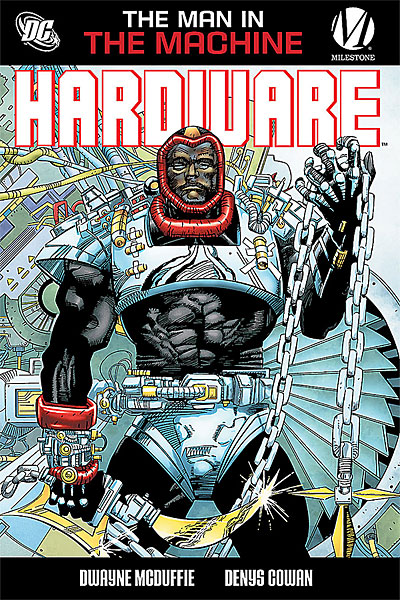
Curtis Metcalf – Hardware from DC Comics’ Milestone imprint
Simply put – we need more examples of Black scientists, Black doctors, Black engineers, Black mathematicians in pop culture. So many more. Positive ones – doing the work, having the struggles, being human – not stereotypes of either Black characters or scientists. Representation done right – in real life, yes, but when real life is skinny in its offerings – in pop culture can inspire, can motivate, and can change perceptions.
For those seeking it, representation can be validation. It can be permission. It shows that there is room for everyone in STEM.
And there is.
Oh – and one last thing – proof of concept of everything above, really…
The short film below – student-made. Inspired by Riri Williams…Pi Day (3/14) is when prospective MIT students learn if they made the cut or not. In the comics, Riri was 15, and had reverse-engineered an Iron Man suit from Tony Stark’s designs after he went missing…
As the university explains it:
On Pi Day 2017, MIT Admissions released a student-made fan film based on the Marvel comic-book character to let prospective students know when the university’s admissions decisions would be made. The short starred real-life MIT student Ayomide Fatunde ‘18, a chemical-engineering major.
Although Riri Williams is a fictional MIT black woman, she’s played by a real MIT black woman, directed by a real MIT black woman, and ‘lives’ in a real MIT black woman’s dorm room, something I thought was pretty awesome.
It shows that all of Riri’s characteristics can be found, collectively, among all of the black women at MIT, and I’m glad that there’s now an additional story among all the fictional stories where people can witness this identity.
People were excited about Riri because she opened up the spectrum of imagination —for people in and outside of the demographic of black women…It makes you think, I can imagine a black, female, mechanical engineer — because I’ve seen one. It allows people of that demographic to imagine themselves that way, too.
This is why it’s important.


